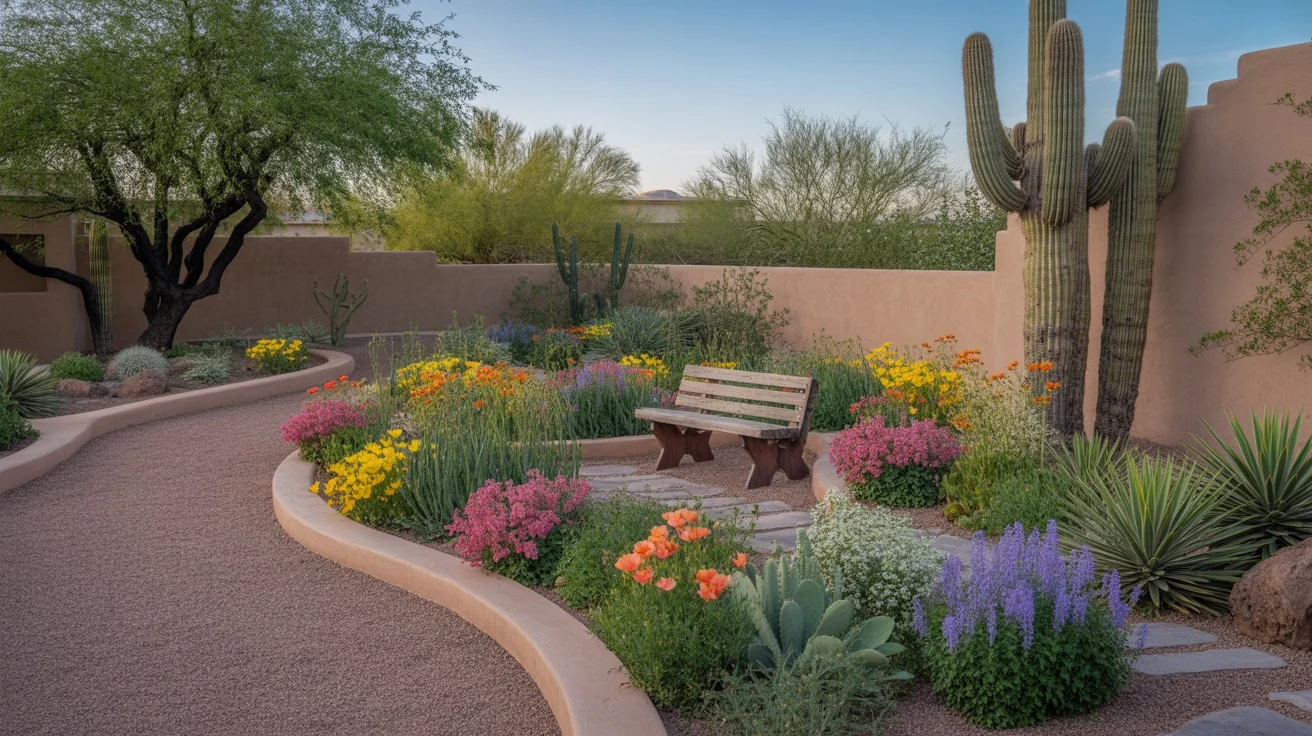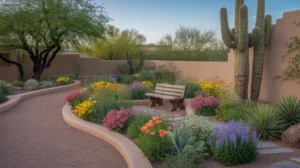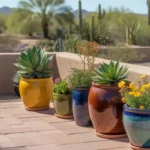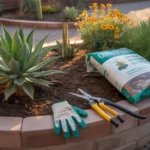As the gentle warmth of spring returns to Gilbert, it’s the perfect time to breathe new life into your garden. With a bit of planning and some expert tips, you can transform your yard into a lush oasis that will thrive all season long. Whether you’re a seasoned green thumb or a novice gardener, these essential strategies will help you revive your garden and create a beautiful outdoor space.

Assess and Prepare Your Garden Beds
Before diving into planting, take a thorough inventory of your garden beds. Remove any lingering debris from winter, such as fallen leaves, broken branches, or expired annuals. Prune back perennials that have become overgrown or woody, making clean cuts just above a node or bud. This will encourage healthy new growth and improve the overall shape of your plants.
Next, evaluate your soil quality. Gilbert’s desert soil can be heavy in clay and low in organic matter. Amend beds with a generous layer of compost or well-aged manure, working it into the top 6-8 inches of soil. This will improve drainage, aeration, and nutrient availability for your plants. If you’re unsure about your soil’s pH or nutrient levels, consider having it tested at a local cooperative extension office for more targeted amendments.
Select Spring-Friendly Plants
When choosing plants for your spring garden, opt for varieties that thrive in Gilbert’s warm, arid climate. Native and desert-adapted plants are excellent choices, as they require less water and are naturally resilient to heat and drought. Some top picks for spring color include:
- Penstemons: These vibrant, tubular flowers attract hummingbirds and bloom in shades of pink, purple, and red.
- Desert Marigold: Bright yellow flowers that bloom profusely and tolerate poor soil.
- Globe Mallow: Delicate, cup-shaped flowers in shades of orange, pink, and white.
- Angelita Daisy: Cheery, golden-yellow daisies that bloom from spring through fall.
For a productive vegetable garden, plant heat-loving crops like tomatoes, peppers, squash, and beans. Start with seedlings from a local nursery for a jump-start on the growing season. Herbs like basil, oregano, and thyme also thrive in the warm spring weather and make a flavorful addition to your garden.
Implement Water-Wise Irrigation
As temperatures rise, efficient watering becomes crucial for your garden’s health. Install a drip irrigation system to deliver water directly to plant roots, minimizing evaporation and waste. Set your system to run in the early morning, when temperatures are cooler and evaporation is slower. Adjust watering frequency based on rainfall and plant needs – established desert plants may only need watering every 7-10 days, while thirstier vegetables may require daily irrigation.
Mulching is another key strategy for conserving moisture and regulating soil temperature. Apply a 2-3 inch layer of organic mulch, such as bark chips or straw, around plants. This will help retain soil moisture, suppress weeds, and gradually enrich the soil as it decomposes. Just be sure to keep mulch a few inches away from plant stems to prevent rot.
Attract Beneficial Insects and Pollinators
A thriving garden ecosystem relies on a diverse array of insects and pollinators. Encourage these beneficial creatures by planting a variety of nectar-rich flowers and providing habitats like bee hotels or butterfly puddles. Some top plant choices for pollinators include:
- Salvias: Spiky, colorful flowers that attract hummingbirds and bees.
- Milkweed: Essential food source for Monarch butterfly caterpillars.
- Coneflower: Daisy-like blooms that feed butterflies, bees, and beneficial wasps.
- Bat-faced Cuphea: Unique red and purple flowers that hummingbirds love.
By inviting pollinators into your garden, you’ll not only support local ecosystems but also improve the health and productivity of your plants. Many edible crops, like squash, melons, and fruit trees, rely on insect pollinators to set fruit, so these hardworking creatures are truly essential to a bountiful harvest.
Monitor for Pests and Diseases
Even with the best care, pests and diseases can sometimes take hold in the garden. Regularly inspect your plants for signs of distress, such as wilting, discoloration, or chewed leaves. Common spring pests in Gilbert include aphids, whiteflies, and spider mites. These can often be controlled with a strong blast of water, insecticidal soap, or neem oil.
Fungal diseases like powdery mildew can also emerge as humidity rises. Prevent these issues by ensuring good air circulation around plants, watering at the soil level rather than on leaves, and applying a preventative fungicide if needed. If you do notice diseased foliage, promptly remove and dispose of it to prevent spread.
By staying vigilant and addressing issues early, you can keep your spring garden healthy and vibrant all season long. With a little effort and these essential tips, your Gilbert garden will be the envy of the neighborhood – a lush, colorful oasis that showcases the beauty of the desert spring.






